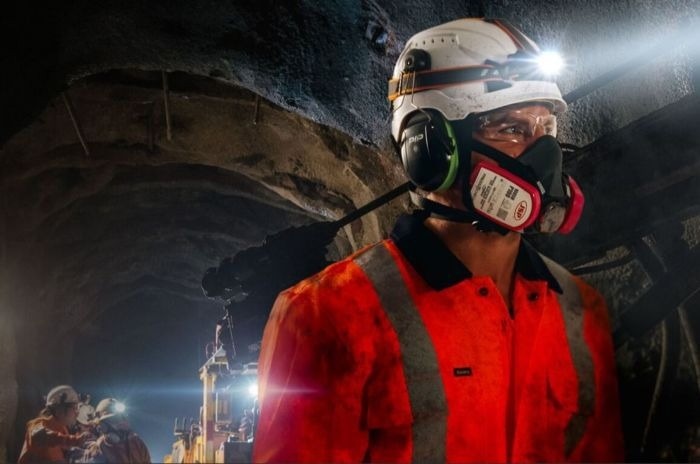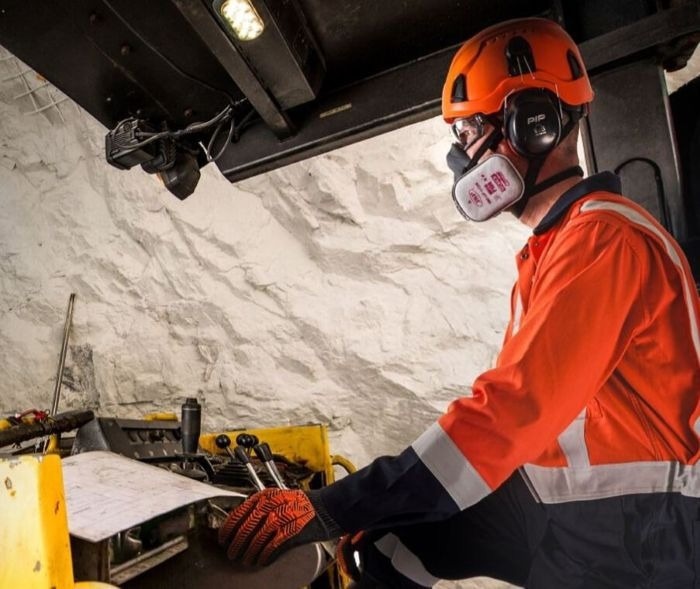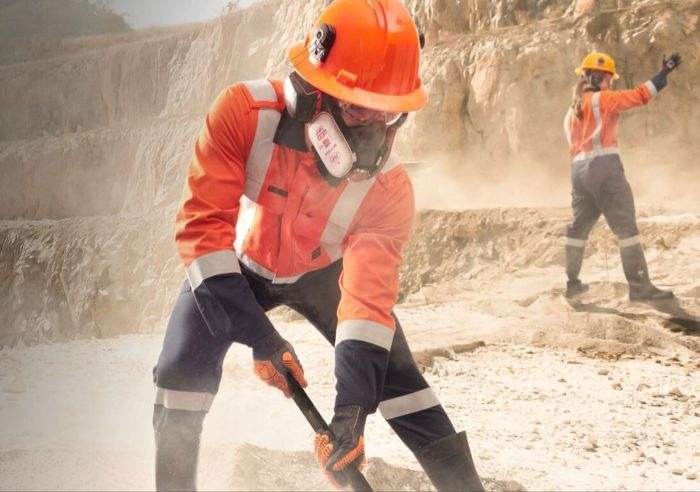Mining is one of the most demanding industries, requiring workers to navigate confined spaces, extreme conditions, and heavy machinery. What occurs when the gear designed to protect them—helmets, gloves, boots, and clothing—fails to provide adequate safety? Outdated or non-compliant personal protective equipment (PPE) can be as hazardous as lacking protection.
While automation and digital technologies enhance safety and efficiency in mining operations, they also introduce new risks that necessitate modernized PPE. The critical question is: how can one determine when protective equipment is ineffective, and what actions should be taken?
From Oil Lamps to Autonomous Vehicles - The Evolving Risks in Mining
For decades, mining PPE addressed traditional hazards such as cave-ins, falling debris, and exposure to dust and chemicals. However, new challenges have surfaced with the rise of autonomous vehicles, automated drilling systems, and intelligent sensors.
For instance, the Canadian government aims to automate a northern mine by 2050. The transition to remote-controlled operations using satellite imaging will likely reduce human exposure to high-risk zones.1,2.
Moreover, the US mining industry has seen substantial automation investments to boost efficiency and worker safety. In states like Nevada and West Virginia, major mining operations are integrating autonomous haul trucks and remote-controlled drilling systems. While these advancements minimize direct human exposure to hazardous areas, workers responsible for equipment maintenance, inspections, and oversight still need specialized PPE suited to their environment, such as dielectric gloves to prevent electrical shocks and high-visibility clothing for machine detection.
Furthermore, keeping worker equipment updated and regularly inspecting it for damage or malfunction is essential. Expired PPE raises the risk of injuries from unexpected failures; it can also impede workers' efficiency, contribute to fatigue, and fail to meet safety standards in today’s rigorous mining environments.3,4,5

Image Credit: Protective Industrial Products, Inc.
When to Upgrade Equipment
Not all PPE requires simultaneous replacement, but upgrading before failure is crucial. Key moments to update gear include:
- After significant wear and tear: If an item no longer offers full protection, it should be replaced immediately.
- When safety standards change: New regulations may necessitate compliance updates for PPE.
- When introducing new technology: If automation alters on-site risks, upgraded PPE may be required.
- As new materials become available: Innovations in PPE design can offer enhanced comfort, durability, and protection.
How to Check if PPE is Still Safe
Staying ahead of PPE expiration requires vigilance. Here are ways to ensure protective gear remains effective:
- Regular Inspections: Look for signs of wear, fading, or damage. Cracks in helmets, frayed gloves, and worn-out boot soles are warning signs.
- Check Expiration Dates: PPE, such as harnesses, gloves, and dielectric boots, has manufacturer-recommended lifespans.
- Stay up to Date with Regulations: Safety standards evolve, so it is crucial to verify that current PPE aligns with the latest industry guidelines.
- Get Worker Feedback: Those using PPE daily often notice issues first. If workers report discomfort or signs of degradation, it is time to replace the gear.
Why Expired PPE Cannot Be Ignored
PPE deteriorates over time. Although outdated gear may appear intact, it can fail when needed most. Worn PPE increases the risk of electrical shocks, burns, and arc flash injuries, while faded visibility gear makes workers harder to detect, raising accident likelihood. Companies using non-compliant PPE face fines, legal liabilities, and reputational damage risks.

Image Credit: Protective Industrial Products, Inc.
The Right PPE for the Job
PPE must exceed minimum safety requirements and enhance protection and performance to adapt to the changing landscape. Protective Industrial Products (PIP®) offers essential PPE solutions tailored to modern mining risks:
Head Protection
Modern mines require impact protection from all angles, not just the top. ANSI Type II safety helmets, such as the Traverse and Kilimanjaro™, provide advanced protection against top and lateral impacts. For sites needing at least Type I protection, the JSP® Evolution® Deluxe mining hard hats meet MSHA standards and include features like lamp brackets, reflective stickers, and built-in eye protection options.
Replace or Upgrade When:
- The shell displays cracks, dents, or signs of UV degradation.
- The suspension system is worn, stretched, or no longer fits securely.
- The helmet exceeds five years of age or has sustained significant impacts.
- The jobsite mandates Type II certification, but current gear is only Type I.
Respiratory Protection
Airborne contaminants such as silica dust, diesel exhaust, and particulates from drilling or blasting make respiratory PPE critical. Options include JSP® and Dynamic™ disposable respirators or reusable face pieces with replaceable filters, available in both NIOSH N95 and P100 certified types.
Replace or Upgrade When:
- Disposable respirators should be replaced daily or sooner if breathing becomes difficult or the mask is visibly soiled.
- Filters for reusable respirators, like P100 filters, should be changed according to the organization’s replacement plan. Look to replace filters when breathing resistance increases or after exposure to high concentrations of hazardous substances.
Upgrade as site conditions worsen or when enhanced protection is necessary.
Hearing Protection
Long-term hearing damage poses a significant risk in high-decibel areas near heavy machinery and blasting sites. PIP® provides disposable earplugs, reusable earplugs, and earmuffs, depending on noise levels and exposure duration.
Replace or Upgrade When:
- Disposable earplugs become dirty, deformed, or lose elasticity, typically after one shift.
- Reusable earplugs show signs of wear, cracking, or no longer seal properly.
- Earmuffs have worn cushions or damaged headbands that compromise noise-blocking effectiveness.
For higher noise reduction ratings or increased exposure levels, disposable plugs can be paired with earmuffs for added protection.
Hand Protection
Miners frequently handle heavy equipment and sharp tools, leading to common hand injuries. Up to 30% of these injuries are attributed to improper fit or incorrect glove type. Cut—and impact-resistant gloves, like Boss® Synthetic Leather Palm with TPR, are often essential, typically offering A5 cut protection and a minimum ANSI 138 Level 2 impact protection.
Replace or Upgrade When:
- Gloves show holes, tears, or fraying.
- Coatings show wear or there is a loss of grip.
- Gloves stiffen or lose flexibility.
- There is an unpleasant odor even after washing.
Upgrade to longer-lasting, high-performance glove options for enhanced comfort, durability, and protection.
Protective Workwear and Footwear
Protective clothing and footwear should shield against environmental hazards while allowing mobility and comfort. Durable choices like Pyrad® AR/FR gear, industrial launderable Bisley® Performance workwear, and Electrical Hazard-rated Puma® Safety Shoes are designed for sustainability and modern protection.
Replace or Upgrade When:
- Workwear shows rips, holes, or faded hi-visibility and reflective striping.
- AR/FR gear has been compromised by exposure to heat or chemicals.
- Waterproofing or insulation fails, or garments are uncomfortable.
- Footwear has worn treads, damaged toe caps, or fails to meet updated safety standards.
Upgrade to longer-lasting, high-performance options to reduce replacement frequency and lower overall PPE costs.
Future-Proofing Worker Safety
Automation and digital technologies are enhancing safety and efficiency in the mining sector. Nonetheless, human expertise remains vital in complex scenarios. By adopting innovations in materials science and aligning PPE with industry trends, manufacturers and mining companies can improve worker protection, compliance, and productivity.

Image Credit: Protective Industrial Products, Inc.
The latest PIP PPE ensures safety, supports well-being, and highlights the industry’s commitment to a sustainable and safer future. Contact a member of the PIP team today to learn more about their product offerings.
References and Further Reading
- Rogers, W.P., et al. (2019). Automation in the Mining Industry: Review of Technology, Systems, Human Factors, and Political Risk. Mining, Metallurgy & Exploration, 36(4), pp.607–631. https://doi.org/10.1007/s42461-019-0094-2.
- Onifade, M., Said, K.O. and Shivute, A.P. (2023). Safe mining operations through technological advancement. Process Safety and Environmental Protection, (online) 175, pp.251–258. https://doi.org/10.1016/j.psep.2023.05.052.
- MINING. (2018). Barrick Gold introduces autonomous trucks at Nevada mine. (online) Available at: https://www.mining.com/web/barrick-gold-introduces-autonomous-trucks-nevada-mine/.
- West Virginia University. (2019). WVU Today | A saving grace underground: WVU engineers utilize robots to improve mine safety. (online) Available at: https://wvutoday.wvu.edu/stories/2019/10/11/a-saving-grace-underground-wvu-engineers-utilize-robots-to-improve-mine-safety (Accessed 11 Jun. 2025).
- West Virginia University. (2022). WVU Today | WVU engineers aim to improve safety with autonomous robotic inspection system for coal waste storage facilities. (online) Available at: https://wvutoday.wvu.edu/stories/2022/09/20/wvu-engineers-aim-to-improve-safety-with-autonomous-robotic-inspection-system-for-coal-waste-storage-facilities (Accessed 11 Jun. 2025).

This information has been sourced, reviewed and adapted from materials provided by Protective Industrial Products, Inc.
For more information on this source, please visit Protective Industrial Products, Inc.